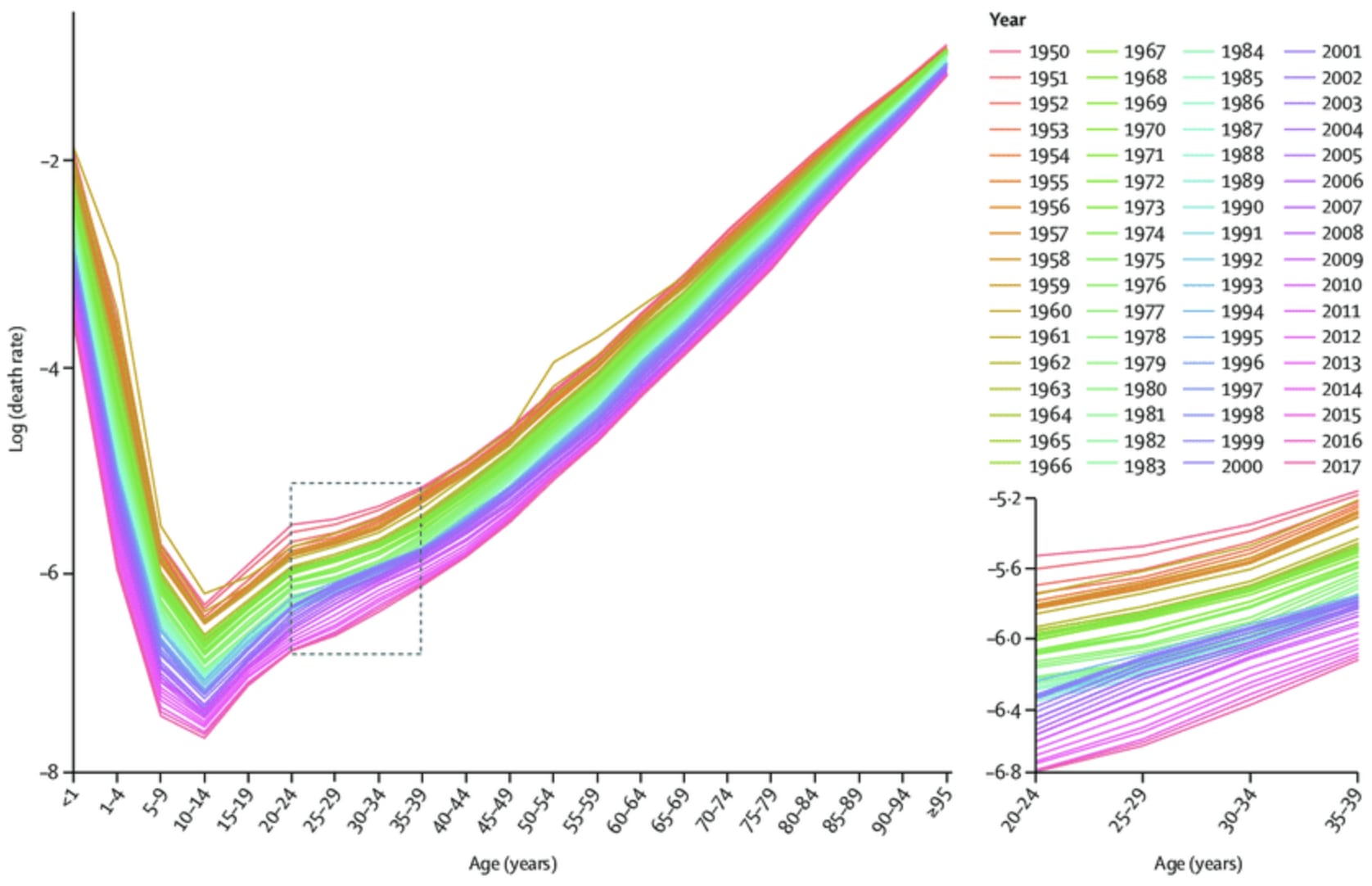Published on March 12, 2025 3:59 AM GMT
A quest to solve aging must start with careful consideration of what it is.
Aging is a constant in nature, from archaea to elephants. Where life finds death as counterpart, aging is unopposed, yet frames our understanding of both.
To solve aging is to prevent death and avoid decay.
Death is a rather sudden process and decay is a fuzzy concept.
Decay is non-linear and hard to characterize at the organism level.
Sudden regime changes can happen over the course of days, see: menopause, post-viral syndromes, acute neuropathy, autoimmune diseases.
To make things harder, we are evolutionarily and culturally adapted to obfuscate signs of decay.
Defining decay at the molecular level is presently an intractable information problem. Theoretically possible but practically unsolvable.
The above is, to the best of my outlining abilities, the paradox most researchers get stuck in when they ponder aging.
Is aging real?
Common sense dictates aging happens, we see it all around us.
But what data can we use to back up this intuition?
This graph is the most clear explanation of aging and damning proof of its existence and effects.
We are born, we are weak and unadapted to our environment and thus we die. We grow, we adapt and thus we start dying less. And then, in our teens… that trend flips.
The scariest part about this trend is that we are certain it has held true for the last century, and almost certainly since the first humans arose.
If you break it down by country it holds true, if you split it on income or genetics it holds true, if you filter disease or look only at the most physically fit people… it holds true.
Somewhere, something happens, and we go from getting better and better at not dying to getting worse at it.
Differences in age
What if we take a first-principles approach when defining aging, looking at decay as the derivative of the path between an 80-year-old and a 10-year-old across?
Two overarching curses become evident, regardless of any intervention:
1. Morphological recovery is slower and less precise. Wounds take longer to heal, healing is more likely to scar than restore, and restored structures vary more in their shape than the original. This applies to things as varied as: a scraped knee, a deep knife wound, liver damage from hepatitis, a burn, a frostbitten fingertip, or pancreatic islets destruction after a night of fast food and binge drinking.
2. Learning rates slow down and perceptual acuity decreases across all senses. We become less capable of perceiving and modeling our environment as well as our own bodies.
These are not only the differences between a 40-year-old and a 100-year-old but also those between a 15-year-old and a 30-year-old. Though, importantly, not between a 1-year-old and a 10-year-old.
Where to look
At the "high level" aging is undeniable. But at "the low level" it doesn’t fit any other ailment.
If I show you a graph like the above, where something happens and then people start dying, exponentially more as time passes — you will almost certainly find a cause when looking at their cells, or, at least, at their bodies.
While we can say with confidence that aging causes death and decay, none of the causes of death and decay we understand are equivalent or even related to aging.
We keep getting better at curing disease and preventing death, but this makes little difference in our fight against aging, due to its exponential nature.
If you treat "aging" symptoms, rather than an "aging" disease. You will look for aging when the effects are most obvious, usually near the point where death is imminent.
But saving people from the grasp of death, while commendable, is unrelated to solving aging. Again is not death, aging is the trend that makes death exponentially more likely the longer we live.
Sadly, the effects of aging are obvious, but the process is elusive to scientific methods.
The more we zoom in: to tissues, to cells, and even to organelles... the blurrier aging becomes.
Making it distinct from most objects of biological study, where resolution provides clarity.
Every time we think we found something that might influence aging (methylation, mutations, telomere shortening, mitochondrial damage), it turns out to be an acasual correlation.
Some of these findings have amazing medical applications, increasing survival rates by a percentage point here or there... but a 1% increase in survival, or even a 1,000,000% increase, won't affect aging.
Thus
Aging is the phenomenon that causes an increase in mortality and a decrease in fitness at some point after an organism's birth, reversing both of these trends.
Aging is correlated with almost everything in biology but lacks an actionable root cause perceivable to any theoretical framework.
Aging often gets confused with mortality and fitness, or other correlates of the two (for example: looks, strength, fertility, and disease resistance).
Aging is a problem that has, thus far, remained completely unaddressed.
We try to whittle away at infinitesimally small chunks that might relate to aging or may lead to us better understanding it.
But the only way to make progress toward a very hard problem is to take the easiest path and see where you get stuck.
Discuss


